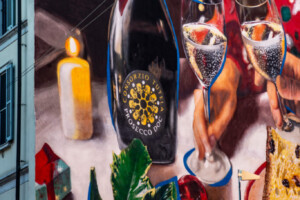“It is a challenging situation, the Coronavirus pandemic will affect everything, everyday life, and even the grape and wine trade. To date, various estimates say that since Horeca, the hotel and restaurant industry has been closed, the wine market in Europe has lost 50% in value. Some wineries and wine growers will not be able to sustain this crisis, which will be challenging for everyone, now in the present, as well as in the future. Plus, there will also be problems completing the harvest and working in the cellar”. This is the message from Pau Roca, Secretary General of OIV, who presented his summary in Paris on the wine situation of 2019. The only certain picture, for this year 2020 that in just a few weeks has been turned upside down by the pandemic is that it will be, for everyone, a year to hunker down.
In any case, salient data show a stable vineyard area worldwide, on 7.4 million hectares (between wine grapes and table grapes, ed.), half of it concentrated in Spain (13%), China (11%), France (11%), Italy (10%) and Turkey (6%). While if you consider only wine grapes, Spain is at the very top, counting 996.000 hectares, ahead of China (855.000), France (794.000) and Italy (708.000 hectares), according to 2019 data. Production in 2019 stabilized at 260 million hectoliters, down -12% compared to 2018. The EU alone, at 156 million hectoliters, is worth 60% of the total, almost all thanks to Italy (47.5 million hectoliters), France (42.1) and Spain (33.5). These three countries account for half of the world's wine production. In the meantime, despite Covid-19, the southern hemisphere is in the midst of grape harvesting, and production estimates are down more than 10% in countries such as Argentina (11.6 million hectoliters) and Chile (10.5 million hectares). Australia is also down a few percentage points (11.5 million hectoliters, on which the impact of the recent fires weighs quite heavily) as well as New Zealand (2.9 million hectoliters). Among the major producers, instead, South Africa has grown 5.2%, and is expected to reach around 10.2 million hectoliters. Regarding consumption, on the other hand, 2019 saw the world drink 244 million hectoliters of wine, a stable figure for 2018, and the US was the number one market (14%) of the total, ahead of the European blockade comprising France (11%), Italy (9%) and Germany (8%) and China (7%). As far as per capita consumption is concerned, on the other hand, Portugal leads at 56 liters of wine per year, ahead of France (49.5 liters), Italy (43 liters), Switzerland (36.5) and Hungary (29.7 liters). The USA, instead, which on the whole weighs on consumption for 33 million hectoliters per year, registered per capita consumption of “just” 12.3 liters, while China was stationary at 1.5 liters of wine per person per year.
On the economic level, trades, in value, are substantially stable, at 31.8 billion euros (+ 0.9% compared to 2018), and growth was modest also in value at +1.7% (105.8 million hectoliters). Bottled wines represented 53% of exports in volume and 69% in value, while bulk wines, weighing for 34% in volume, represented just 8% in value. The situation for sparkling wines is different, as 9% of the volumes moved generated 21% of the exported value.
Italy was the largest exporting country by volume counting 21.6 million hectoliters exported, ahead of Spain (21.3) and France (14.2). However, the French firmly hold the number one position in value, at 9.8 billion euros, ahead of Italy, at 6.4 million euros and Spain at 2.7 million euros. The largest importers regarding quantities, however, were Germany (14.6 million hectoliters), the UK (13.5) and the USA (12.3), a trio that is reversed value-wise, as the US is at the top, at 5.5 billion euros, the United Kingdom at 3.8 and Germany at 2.6. The wine market overall reached an internationalization index of 43% in 2019, which means that more than 4 out of 10 bottles were consumed outside the country of production.
This is the summary of the picture for 2019. The year 2020 is yet to be deciphered, though the certainty will be the challenges that everyone will have to face. “Up to now we have seen growth in sales in large retail stores”, Roca pointed out, “but it is easy to imagine that there will be a drop in purchasing power in the coming weeks, which will weigh on wine consumption, just like the decline in tourism and wine tourism will. It will be an enormous setback, where the economic scenario, in some ways, is similar to that of the post World War II period. We will have to work very hard and diligently to recover, avoiding, for example, messages that have appeared recently speaking about the benefits of drinking wine against Covid-19. They are immoral and unacceptable”.
Copyright © 2000/2025
Contatti: info@winenews.it
Seguici anche su Twitter: @WineNewsIt
Seguici anche su Facebook: @winenewsit
Questo articolo è tratto dall'archivio di WineNews - Tutti i diritti riservati - Copyright © 2000/2025









































































































































































































